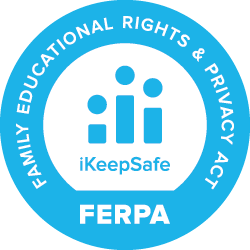DEV VERS - Deconstruction
Sometimes you have to take things apart to understand how they work. In this activity, you will take apart electronics to understand why they are hard to recycle.
Resource Title:
Deconstruction
Description:
Sometimes you have to take things apart to understand how they work. In this activity, students will take apart electronics to understand why they are hard to recycle.
Target Grade Level:
Grades K-4
Discipline or Course (Audience):
Science
Time Frame:
Two to three 45-minute class periods without extensions
Suggested Grouping:
2-3 students
Educator Prep:
While curbside recycling has become more common in the U.S. in recent years, many people still do not know how to recycle items that cannot be left at the curb. Electronics are one example. According to ReMA, about 31% of Americans have never recycled electronics. Many people polled weren’t aware that electronics couldn’t be thrown away, didn’t realize electronics could be recycled, or didn’t know how to recycle electronics.
It isn’t as easy to recycle electronic items as to recycle paper, plastic, metal, and glass, but there are good reasons to do it. In many places, it is illegal to put electronics in the trash because electronics may contain toxins that can leak into the landfill. Electronics also contain parts, such as metal and plastics, that won’t break down quickly in the landfill. In addition, as with all recycling, reusing the parts in electronics saves valuable resources and consumes less energy than manufacturing items using new materials.
Some common places that electronics can be recycled include scrap yards, electronics manufacturers and retailers, and, in some areas, designated hard to recycle events. If a search doesn’t bring up this information for your area, you can contact your local trash and recycling provider to ask. The EPA’s Electronics Donation and Recycling resource offers some specifics about where to recycle electronics nationally.
Tips for finding and using electronics:
- You can often find used electronics at thrift stores. You can also ask repair shops for items they cannot repair. You can also ask families to send in electronics they no longer use.
- Do not use items with a monitor.
- Some electronic items, particularly older ones, can also be a good way to see simple machines in action.
Safety tips:
- Be sure students are wearing safety goggles as they deconstruct the items.
- Cut the cords off of all items so students can’t plug them in.
- Remove all batteries.
- Do not allow students to deconstruct monitors. Those with CRT (cathode-ray tubes) can be dangerous. They can carry a charge long after they are unplugged.
- Instruct students to only take apart things they can unscrew or easily pull apart. They should not cut into any pieces.
- Students may want to cut wires (for example, to remove a circuit board). In this case either monitor closely or do the cutting yourself. Do not give wire cutters to groups when distributing the other tools.
- Have students wash their hands after deconstruction.
- For younger students, ask for adult volunteers to more closely monitor groups or to take apart items as small groups of students watch. If using this option, be sure to allow students to direct the deconstruction. Do not allow adults to simply take the item apart.
Recommended Student Background Knowledge and Skills:
- Note: You may want to have students complete the related Activity - Test Your Metal which is a nice companion to the sorting students do in this activity.
Materials:
Important Note: Follow your district science safety and materials guidelines when engaging with these recyclable and electronic materials.
- an assortment of mixed recycling (paper, plastics, glass), clean and dry
- pliers, wrenches, and screwdrivers of various types and sizes (Check the electronics you gather to see exactly what kinds of tools you will need.) You may also want to have wire cutters on hand for adult use
- boxes or tubs to hold electronics
- hula hoops to help younger students sort recyclables
- safety goggles
- include a variety of nonfunctioning electronics, such as computers, inkjet printers, VCRs, etc.
- books about recycling;
- Recommended for grades K-2: Why Should I Recycle? by Jen Green.
- Recommended for grades 3-4: Recycle!: A Handbook for Kids by Gail Gibbons
Teacher Preparation Directions:
- Gather materials
- Review the student section before launching the lesson.
Sorting Recyclables:
- Before beginning the activity, give students a brief overview and review the table expectations. Emphasize that students are looking for patterns when they group their items. Pose the question: What makes the items similar and different from the other groups? You might even provide them with some simple tools like magnifying glasses.
- Divide students into groups of no more than three and distribute recyclable items to each group. Be sure each group receives a mixture of paper, glass, and different types of plastic.
- For younger students:
- do not use the data table.
- provide boxes, hula hoops, or other concrete items into which students can sort the recyclables.
- discuss their ideas in their groups
- Identifying patterns forms the basis for classification. As students sort the items, ask them to look for patterns in the materials.
- Older students should record their categories and characteristics on the data sheet.
- Ask groups to share the criteria they used to sort the recyclables.
Sorting Electronics:
- Give a brief overview.
- Introduce students to the term “electronics.” Write the word on the board for students to reference as they read instructions.
- Distribute one electronic item to each group. Have them complete the activity. Be sure to provide small boxes or tubs in which to put small parts to all groups.
- Discuss with students the different kinds of items they identified in both activities. Support students as they draw connections between the items they sorted.
- Explain that some items are more difficult to recycle than others. The items students sorted in the first activity can usually be recycled at home or at school. Other items, such as electronics, are harder to recycle.
- Have students work with their groups to write their ideas about why electronics are harder to recycle.
- Read a book about recycling to students. Recommended books are listed in the materials section, but any book about recycling that describes how items are sorted, broken down, and used to make other materials will work. Since this is a read-aloud, you can also adlib a well-illustrated book for older students. As you read, emphasize how different materials are sorted, broken down, and made into something new.
- After reading, discuss how the information in the book relates to groups’ ideas.
- Does the information support their ideas?
- Does it contradict it?
Example Answers:
Teachers may choose to direct students to copy and paste the table into an electronic document such as a Google Doc or Google Slide.
Recyclables Groups |
Examples for Teachers: Patterns & Observations(How are items alike, and how are they different from other groups?) |
|
plastics |
sturdy but slightly bendable or flexible, you can’t usually see through them, but sometimes you can. It can be scratched with your fingernail and come in many different colors |
|
cans/tin |
hard, cannot bend, silvery/shiny, cannot see through them (they are opaque), make sounds when gently hit together |
|
glass |
stiff, cannot bend, can see through them (transparent), make clinking sounds when gently hit together |
Electronics Group |
Examples for Teachers: Patterns & Observations(How are items alike, and how are they different from other groups?) |
|
green boards |
green, have lots of wires and metal parts attached |
|
wires |
flexible/bendable, long, wrapped in red, white or green rubbery materials, can see metal inside |
Remote Learning Adaptations:
This activity can be introduced online.
STUDENT CONTENT BELOW
You can’t put some things in a recycling bin. Have you ever wondered why? Let’s take apart some items to find out.
Materials:
- Device with internet access
- Electronic items, like computers or printers
- Recycling items
- Tools: examples include wrenches and screwdrivers
- Safety goggles
Safety Notes:
- When using technology, engage in safe, legal, and ethical behavior; this applies to devices (hardware), applications or programs (software), and interactions with others.
- Follow your teacher's safety instructions carefully.
Sorting Recyclables:
Your teacher will give you a box of recycled items. With your group, sort your items into categories. Look at each group you made and make titles for each group. For example, you could say: "This group all are made from paper, so we will title it Paper Materials."
Think About It:
- How are the items in this group alike?
- How are they different from the items in other groups?
- What patterns do you notice?
- How did you sort the items?
- Can you sort your items differently?
Let's Record Our Thinking:
Look at the table below to guide how you record your observations. (If you choose or are directed by your teacher, you can copy and paste this table into an electronic document like a Google Doc.)
Group |
Patterns & Observations |
|
|
|
|
|
|
|
|
|
Think About It:
- How are the items in this group alike?
- How are they different from the items in other groups?
- What patterns do you notice?
- How did you sort the items?
- Can you sort your items differently?
Let's Record Our Thinking:
Look at the table below to guide how you record your observations. (If you choose or are directed by your teacher, you can copy and paste this table into an electronic document like a Google Doc.)
Group |
Patterns & Observations |
|
|
|
|
|
|
Why Is It So Hard?
Recycling items like the ones you sorted are easier to recycle.
Electronic items like the ones you took apart are harder to recycle.
Why do you think that happens? Use the book about recycling your teacher shared and your knowledge from sorting recyclables and electronics to form your ideas of why electronic items are harder to recycle.
Make a Guess!
(If you choose or are directed by your teacher, you can copy and paste this table into an electronic document like a Google Doc.)
Statement: Electronics are harder to recycle than other materials such as paper or plastics.
|
|
Write Your Ideas Here: |
Take Action:
Let's research ways to recycle electronic items in your community. Read the guiding questions below to help determine how you research recycling electronics in your community.
- Does your community have e-waste Collection events?
- Are there specific places in your community where you need to drop off electronics?
- Does your community offer e-waste pick up at the curb?
- Are there companies in your area that might be certified e-waste recyclers who will safely dispose of electronics for a fee?
- What other ways might electronics be recycled?
Poster Power:
Create a poster telling others in your community how to recycle electronics. Use these guiding questions to guide your design.
- What should your audience do to recycle electronics?
- Why should they do it?
- How can they do it?
Reflect and Apply:
- Create a list of items you could recycle at home and school. Circle the top three items you want to continue or begin recycling.
- Why are electronics harder to recycle? Make a list of ways that electronics can be recycled responsibly.
Extensions:
Create a campaign focused on materials that can be difficult to recycle. This can include electronics and other items that can’t be recycled at the curb. Here are some ideas to get you started:
- hardback books
- plastic grocery bags
- styrofoam
- bubble wrap
- batteries, and
- empty gift cards
Think about how you could share information about hard-to-recycle items with your school or community. Will your campaign include flyers, public service announcements, advertisements, or talks to the PTO or other civic groups?
Create art or a new product with recycled materials. Use your imagination! Share your new product or art with a real-world audience. Encourage others in your community to take their recycled materials and create something new!



